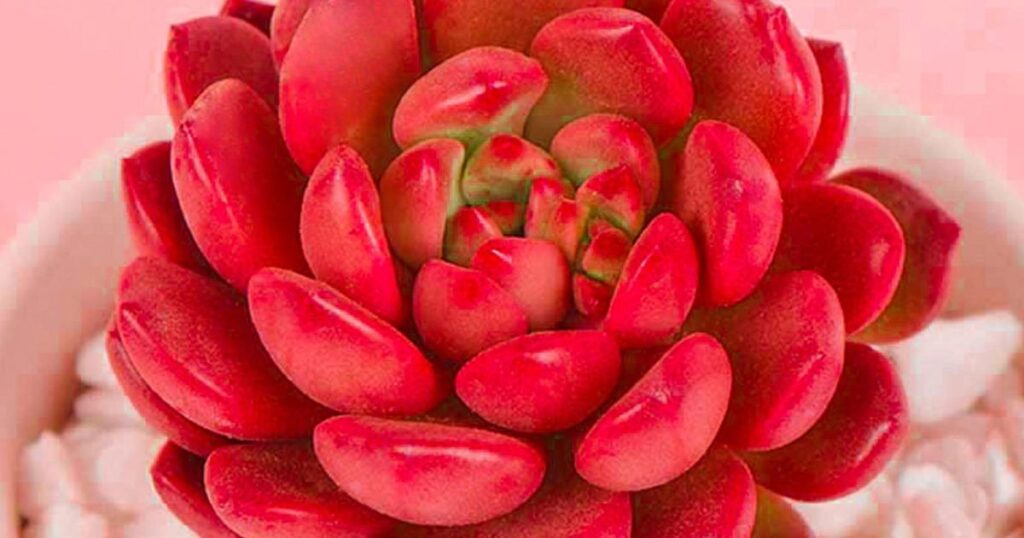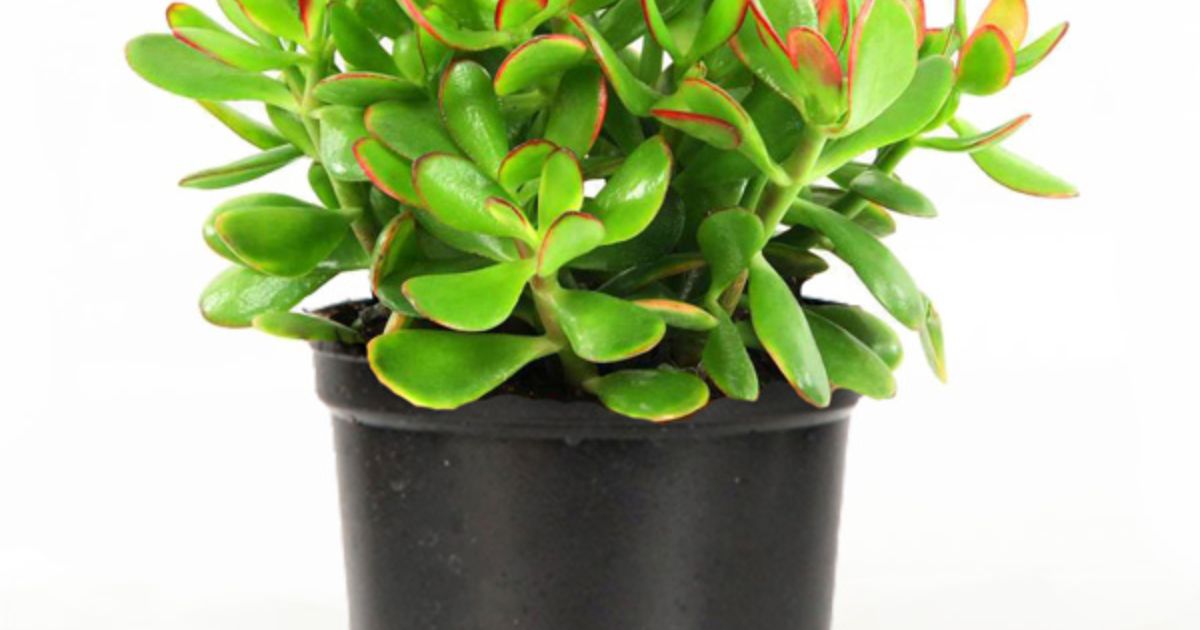Succulents turn red due to stress or environmental factors like intense sunlight, low water, or extreme temperatures. The red hue is a protective response, as it helps the plant absorb less light and prevent sunburn. This adaptation is a survival strategy that allows succulents to conserve water and thrive in arid conditions.
Curious about the fascinating world of succulents? Why do succulents turn red .Dive into the vibrant realm of these hardy plants and unlock the secrets behind their stunning crimson transformation. Discover the intriguing reasons behind this phenomenon – from survival tactics to environmental cues. Join us on a journey to unravel the mystery of succulents turning red.
Succulents turn red as a natural response to stress, such as intense sunlight or water scarcity. This vibrant coloration is a protective mechanism that helps reduce sun damage and water loss, allowing the plant to thrive in challenging environments. Essentially, the red hue serves as a survival strategy for these resilient succulents.
Do All Succulents Turn Red Or Change Colors Under Stress?
Not all succulents turn red or change colors under stress. If you’re wondering, why did my succulent turn black, it’s important to note that while many succulents exhibit color changes as a response to stress, the specific hues and patterns can vary among different species. Some succulents may turn red, while others might display shades of purple, orange, or even brown when faced with environmental challenges.
The color transformation serves as a protective mechanism for these plants, helping them adapt to harsh conditions. However, it’s important to note that not every succulent undergoes this change, as some species may maintain their original coloration even in stressful situations.
Why Would You Want To Stress Your Plant?
Stressing your plant might seem counterintuitive, but controlled stress can actually benefit certain plants. When you subject a plant to mild stressors, such as controlled drought or pruning, it triggers a response that can enhance its resilience and defense mechanisms.
Furthermore, controlled stress can promote certain desirable traits in plants. For example, in the case of tea plants, controlled stress through careful shading can enhance the flavor of the leaves. So, intentionally stressing your plant under specific conditions can lead to positive outcomes, fostering a healthier and more robust specimen.
Succulents Change Color When Stressed

Succulents exhibit a remarkable ability to change color when under stress. This transformation is primarily a survival mechanism in response to environmental challenges. When subjected to factors like intense sunlight or limited water, succulents activate pigments in their leaves, causing them to take on vibrant hues, ranging from reds and purples to oranges.
This color change is more than just an aesthetic shift; it helps the succulent adapt to harsh conditions. By altering pigmentation, the plant can mitigate the impact of stressors, such as excessive sunlight, and prevent potential harm. Essentially, the visually striking color change in stressed succulents serves as a visual indicator of their resilience and ability to thrive in challenging circumstances.
How Sunlight Causes Succulents To Change Color
Sunlight triggers a remarkable color change in succulents through a process called photoprotection. When exposed to intense sunlight, these hardy plants produce pigments like anthocyanins and carotenoids as a shield against potential sun damage. This natural response results in a spectrum of colors, from vibrant greens to striking reds, enhancing the plant’s ability to adapt and survive.
The intricate dance between sunlight and succulents showcases their remarkable ability to not only endure but thrive in challenging conditions. As the intensity of sunlight increases, so does the production of protective pigments, creating a kaleidoscope of hues. This fascinating interplay between light and pigmentation not only adds aesthetic appeal to succulents but also highlights their evolutionary strategy to harness sunlight for optimal growth and resilience.
| Key Points | Description |
| Sun Stress | Succulents turn red due to increased sun exposure, a natural response known as sun stress. |
| Protective Pigments | Red pigments, like anthocyanin, act as sunscreen, protecting succulents from harmful UV rays and excessive sunlight. |
| Environmental Factors | Temperature fluctuations and stressors trigger red coloration, signaling the plant’s adaptation to challenging conditions. |
| Type of Succulent | Some succulent species naturally exhibit red hues, while others change color in response to environmental stimuli. |
| Balanced Care | Providing optimal sunlight, well-draining soil, and appropriate watering helps maintain vibrant red tones in succulents. |
Succulents Change Color After Temperature Fluctuations
Succulents undergo a fascinating color change in response to temperature fluctuations. When exposed to cooler temperatures, these hardy plants may take on deeper hues, showcasing shades of purple, blue, or red. This transformation is a natural and adaptive process that enhances the succulent’s ability to absorb and utilize sunlight.
Conversely, warmer temperatures can result in a shift towards lighter colors in succulents. The change in pigmentation is not only aesthetically appealing but also serves a functional purpose. By adjusting their color in response to temperature variations, succulents effectively regulate their internal temperature and maintain optimal conditions for growth in ever-changing environments.
How Watering Causes Succulents To Change Color
Watering can cause succulents to change color based on the amount and frequency of hydration. When succulents receive too much water, their leaves may become waterlogged and appear bloated, often leading to a faded or yellowish color. On the other hand, if they experience infrequent watering or prolonged drought
The balance of watering is crucial for maintaining the desired coloration of succulents. Adequate watering, allowing the soil to dry between watering sessions, helps sustain a healthy balance, promoting the natural vibrancy of the plants. Understanding and adjusting watering practices can contribute to the visual appeal and overall well-being of these fascinating and resilient succulents.
How To Make Succulents Change Colors
Unlocking vibrant hues in succulents is surprisingly easy. Firstly, ensure they receive the right amount of sunlight – vivid colors often result from exposure to direct sunlight, although some varieties may need partial shade. Adjust watering frequency, allowing the soil to dry between waterings.
Experiment with the soil mix, incorporating well-draining options and mineral-rich amendments to enhance color development. Additionally, seasonal temperature variations can influence succulent hues, with cooler temperatures often intensifying colors. While encouraging color changes can be exciting
What Causes Succulent Red Color Change?
The vibrant red color change in succulents is often triggered by environmental stressors. When exposed to intense sunlight, succulents produce pigments like anthocyanin to shield themselves from potential harm. This natural response not only protects the plant from sun damage but also adds a visually striking red tint to its appearance.
Additionally, water scarcity can prompt succulents to turn red as a survival strategy. In times of drought, these resilient plants undergo physiological changes to conserve water, and the red color serves as a signal of their adaptive response.
Is It True That All Succulents Change Color?
Not all succulents change color, as their ability to do so depends on various factors such as species, environmental conditions, and overall health. Some succulents maintain a consistent color throughout their life, while others may exhibit color changes in response to stress or seasonal variations.
The phenomenon of color change in succulents is often linked to protective mechanisms. Certain species might intensify or alter their hues as a response to factors like sunlight exposure or water availability, serving as a natural adaptation to ensure their survival in diverse conditions.
Why Are My Succulents Turning Red?
If you’ve ever wondered, .Why are my succulents turning red? The answer lies in their adaptive nature. Succulents develop a red tint as a response to stress, often caused by exposure to intense sunlight. This color change serves as a built-in defense mechanism, helping the plants shield themselves from potential sun damage.
water scarcity can also trigger the striking red transformation in succulents. As these hardy plants face drought conditions, their leaves adopt a reddish hue to reduce water loss. So, if you notice your succulents taking on a rosy tint, it’s a sign that they’re employing clever strategies to thrive in challenging environmental conditions.
FAQ’s
Why do some succulents turn red?
Succulents turn red as a protective response to stress, commonly caused by factors like intense sunlight or water scarcity.
Are all succulents capable of turning red?
Not all succulents exhibit the red coloration, as it depends on the species and individual plant’s response to environmental conditions.
Can I prevent my succulents from turning red?
While you can’t completely prevent the color change, providing optimal sunlight, water, and care can minimize stress factors and maintain a healthier green appearance.
Is the red coloration harmful to succulents?
No, the red hue is a natural adaptive mechanism that helps succulents cope with environmental challenges, promoting their survival in diverse conditions.
Should I be concerned if my succulent turns red?
The red coloration is often a sign of the plant’s resilience and ability to adapt. It’s essential to monitor overall plant health and adjust care accordingly.
Conclusion
In conclusion, the captivating phenomenon of succulents turning red unveils the remarkable adaptability of these resilient plants. The vivid color change is not merely an aesthetic feature but a strategic response to environmental stressors. Whether faced with intense sunlight or water scarcity, succulents employ their natural defense mechanism, evolving into shades of red to mitigate potential damage and conserve vital resources.
Understanding the reasons behind succulents turning red enhances our appreciation for the intricacies of nature. It highlights the intricate balance these plants strike between survival and aesthetics. As caretakers of succulents, this knowledge empowers us to create optimal conditions for our green companions, fostering an environment where they can thrive and express their unique adaptive capabilities.










